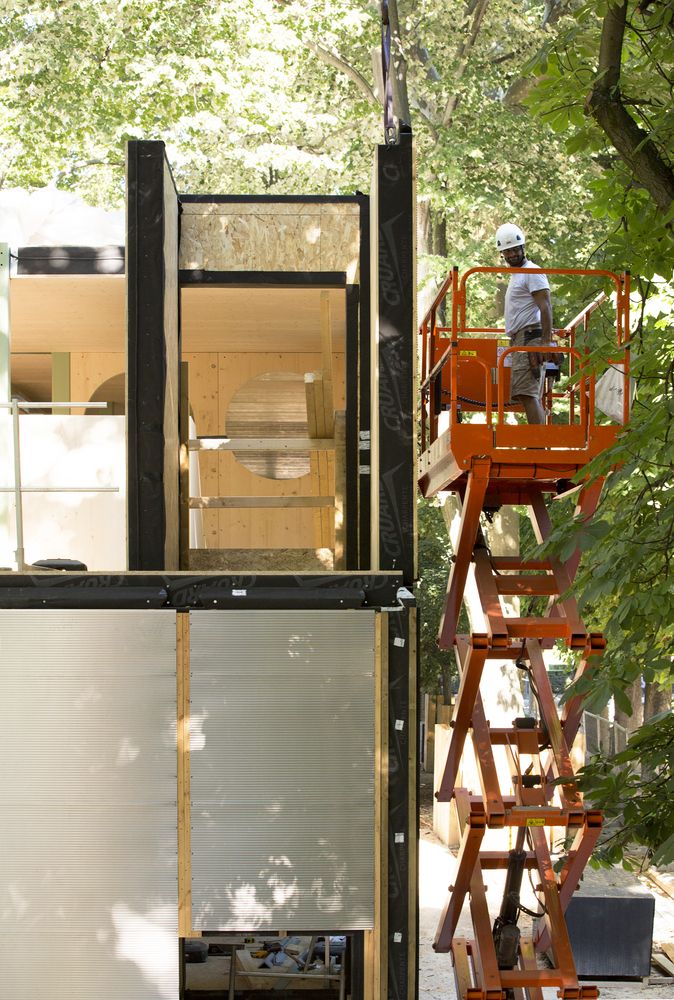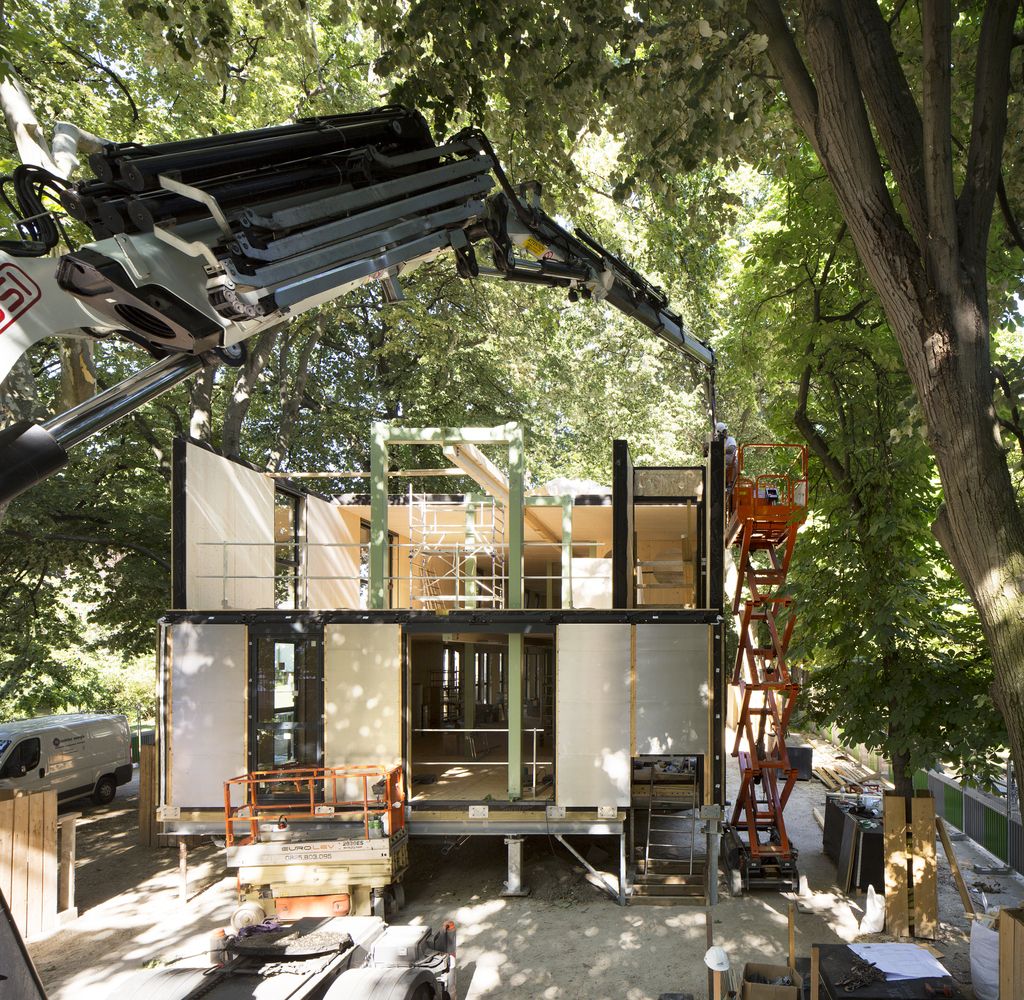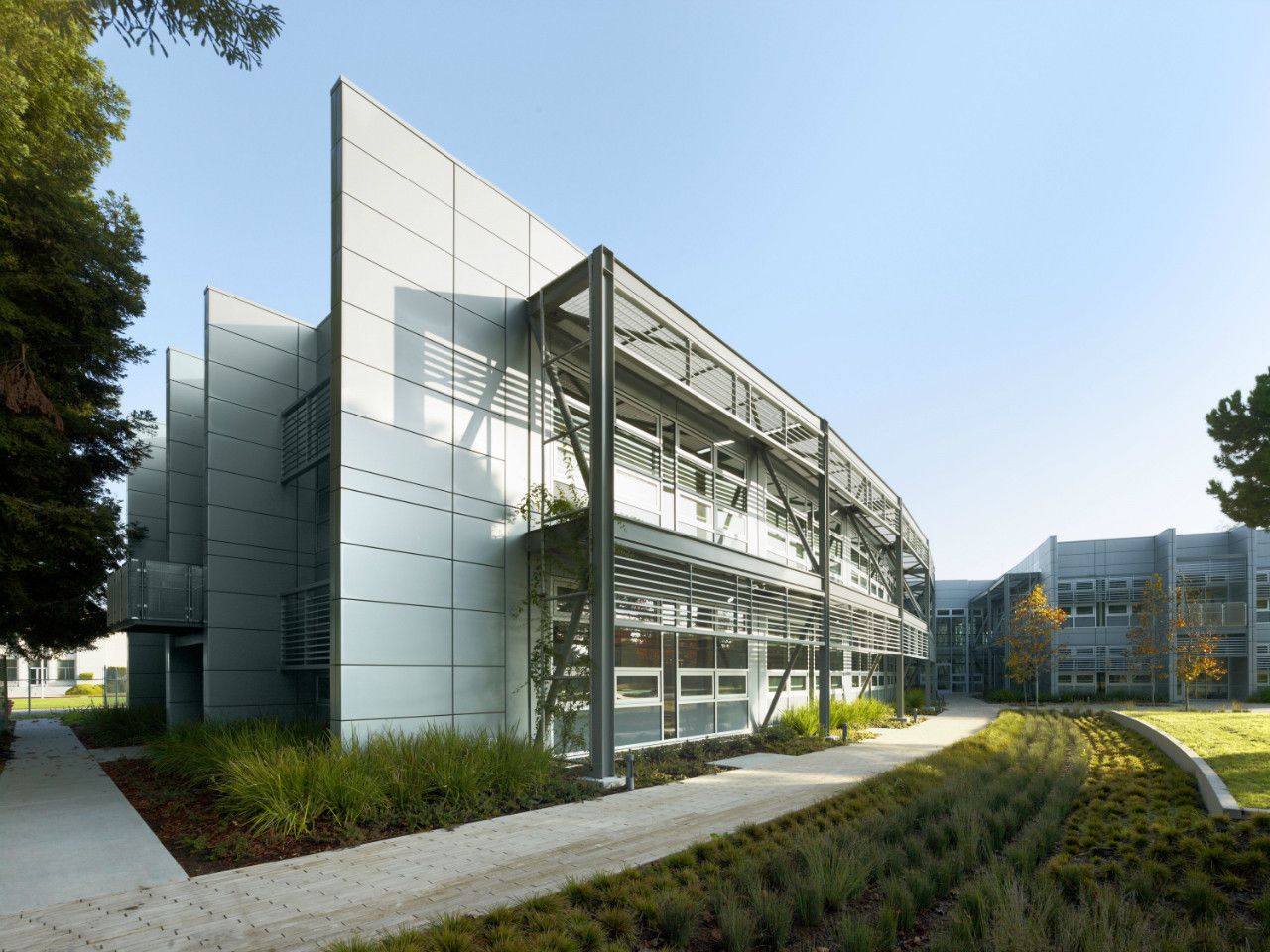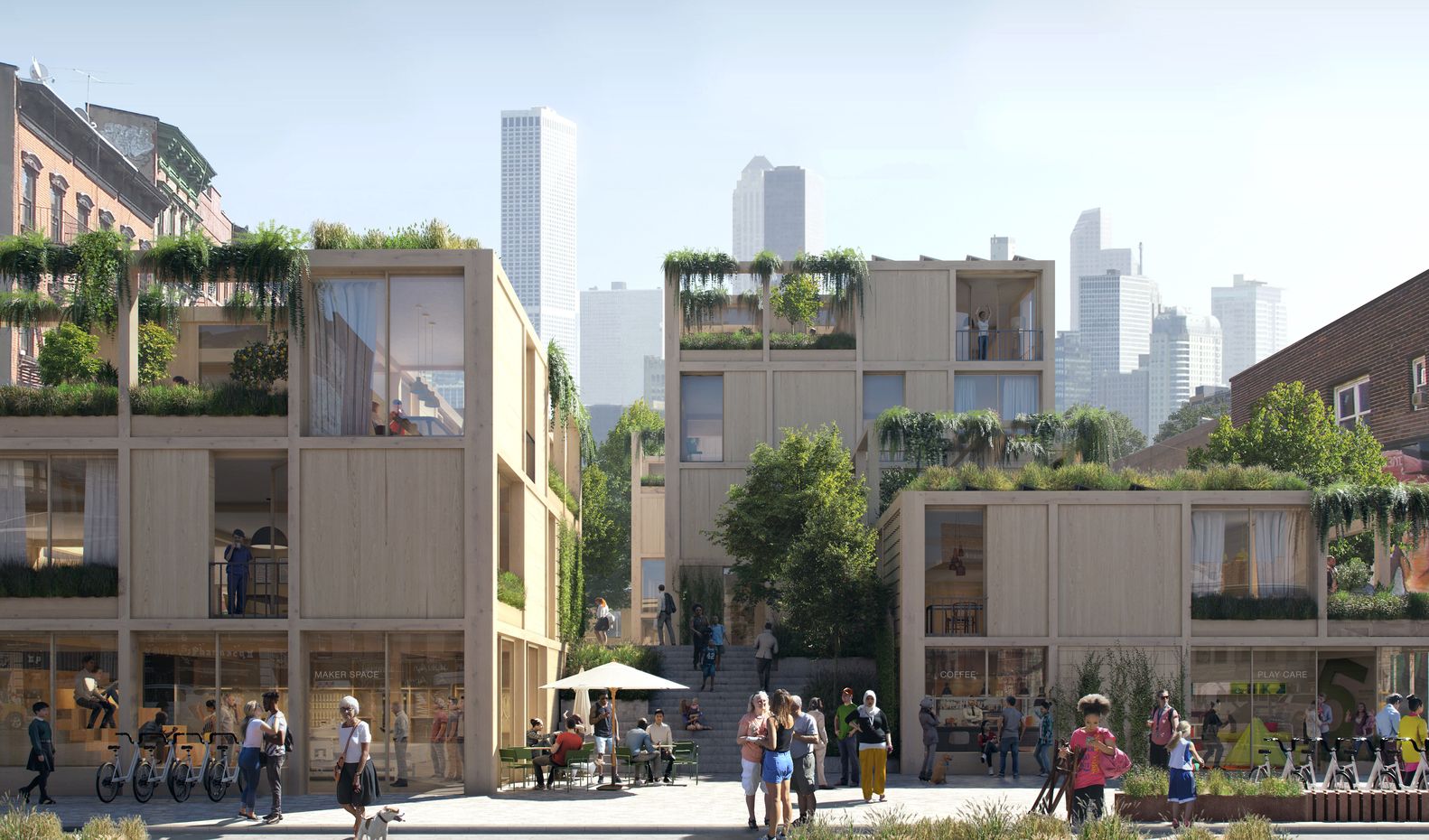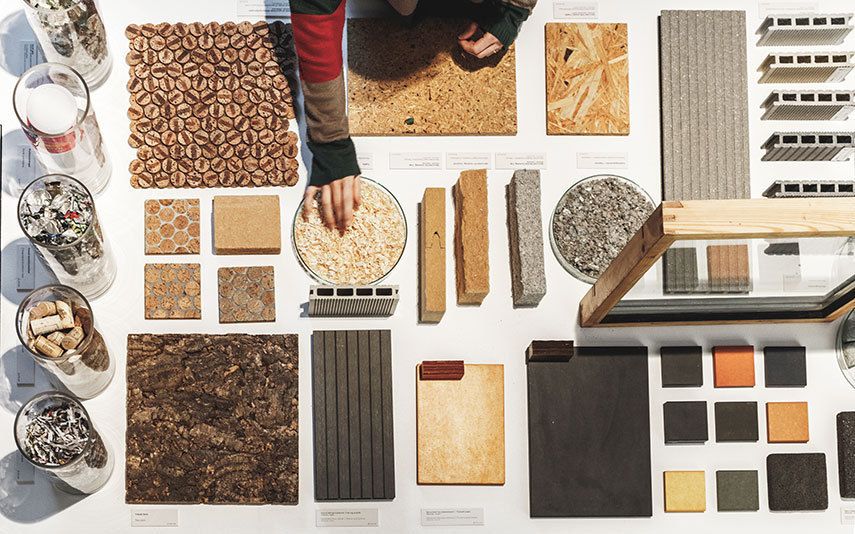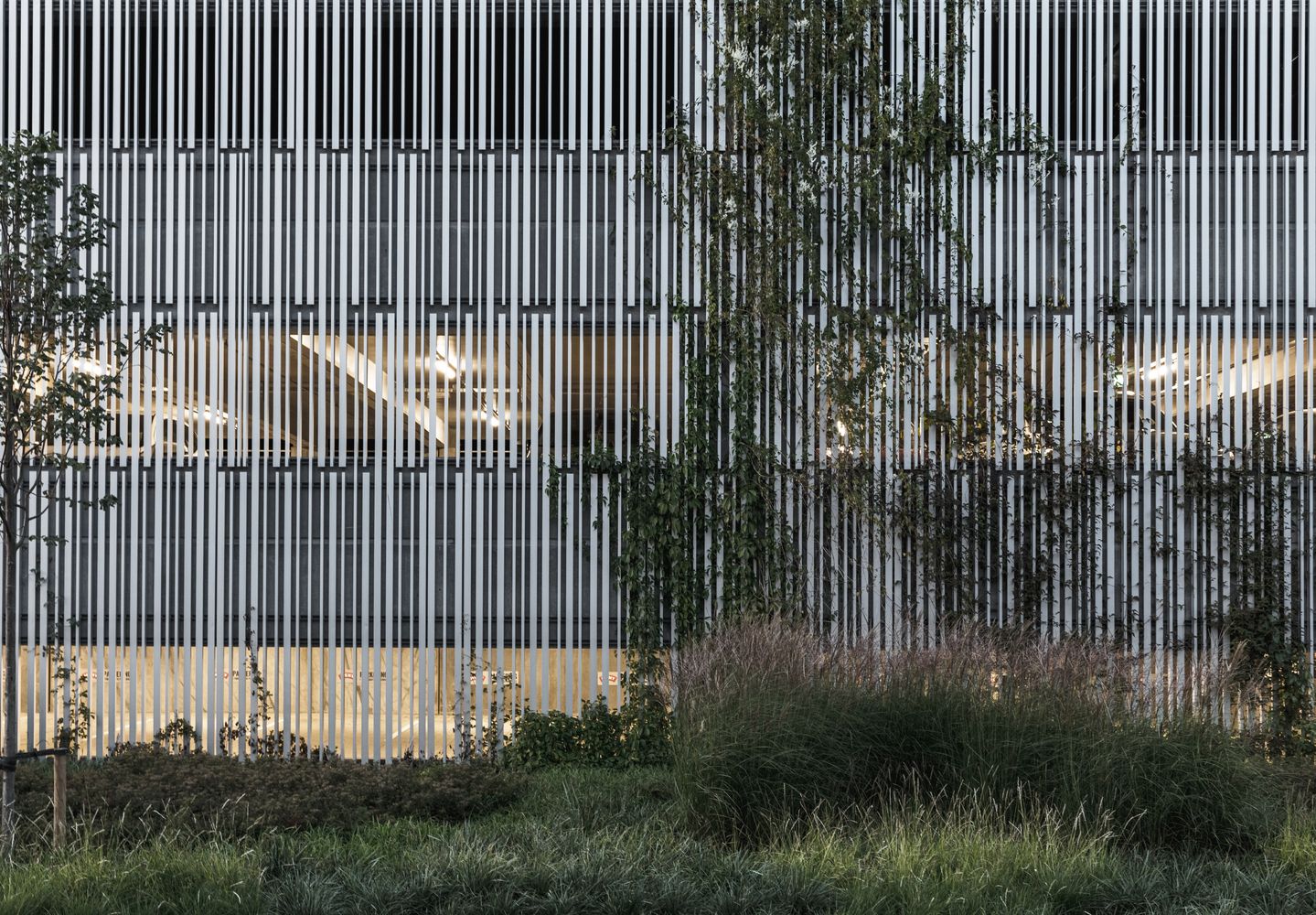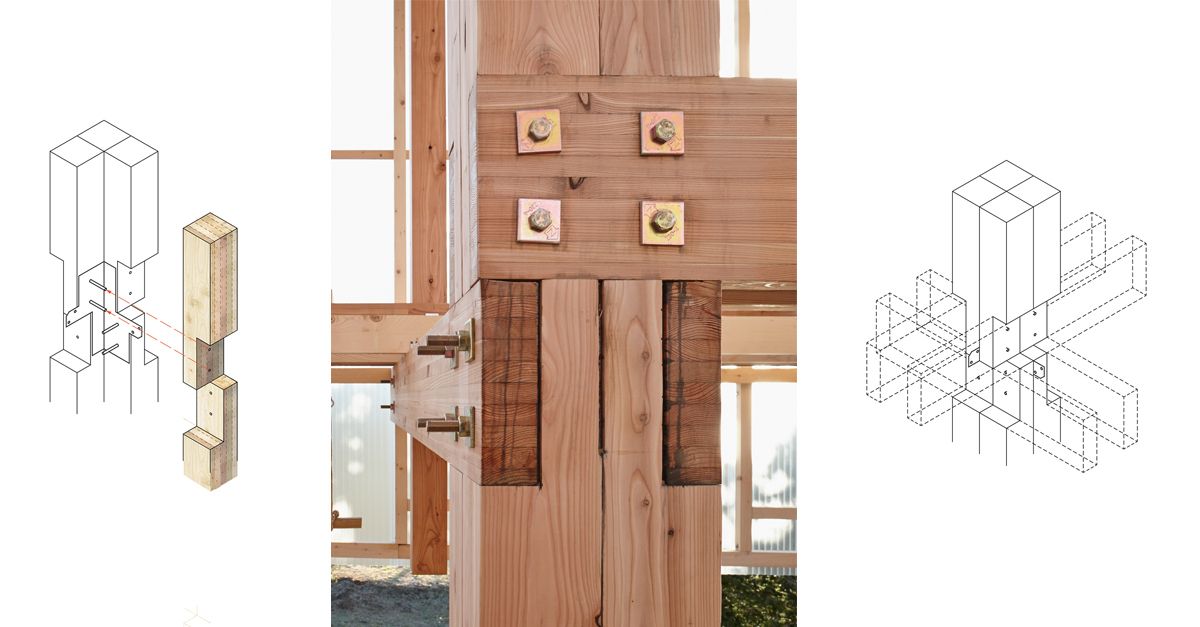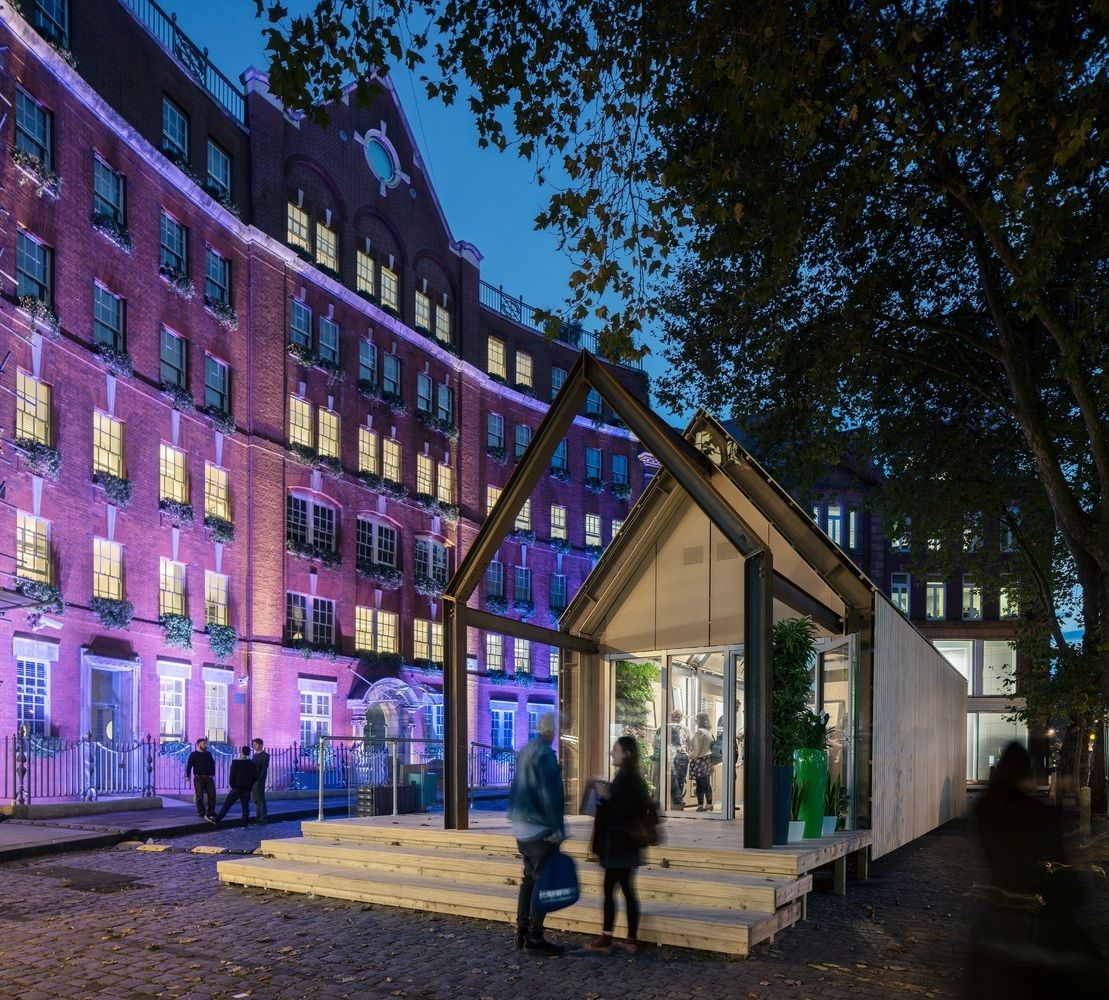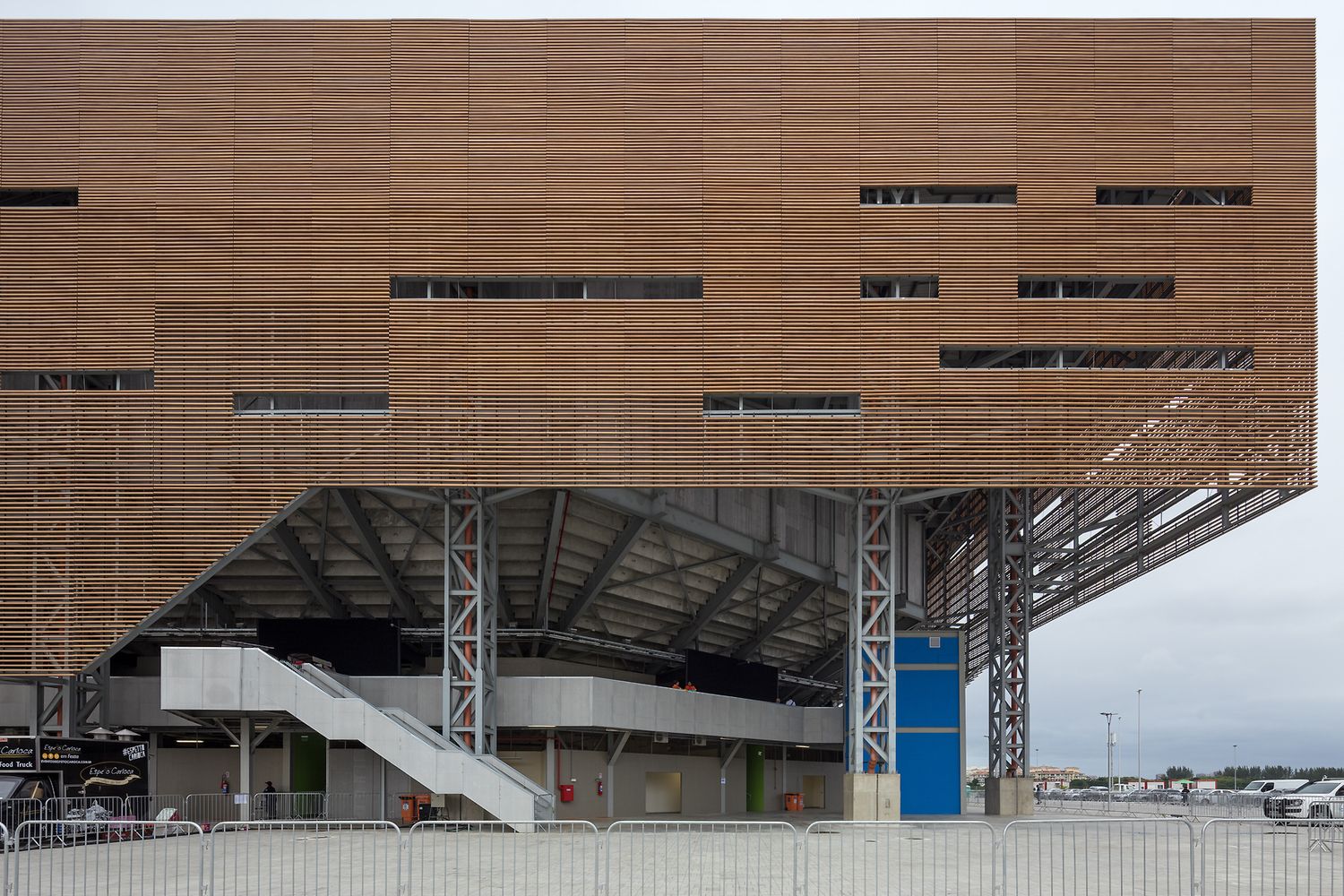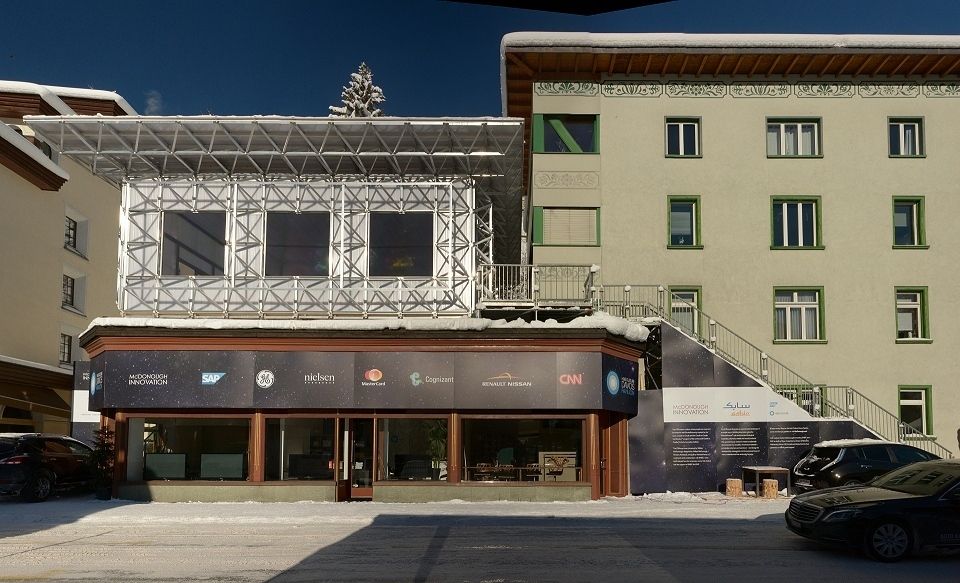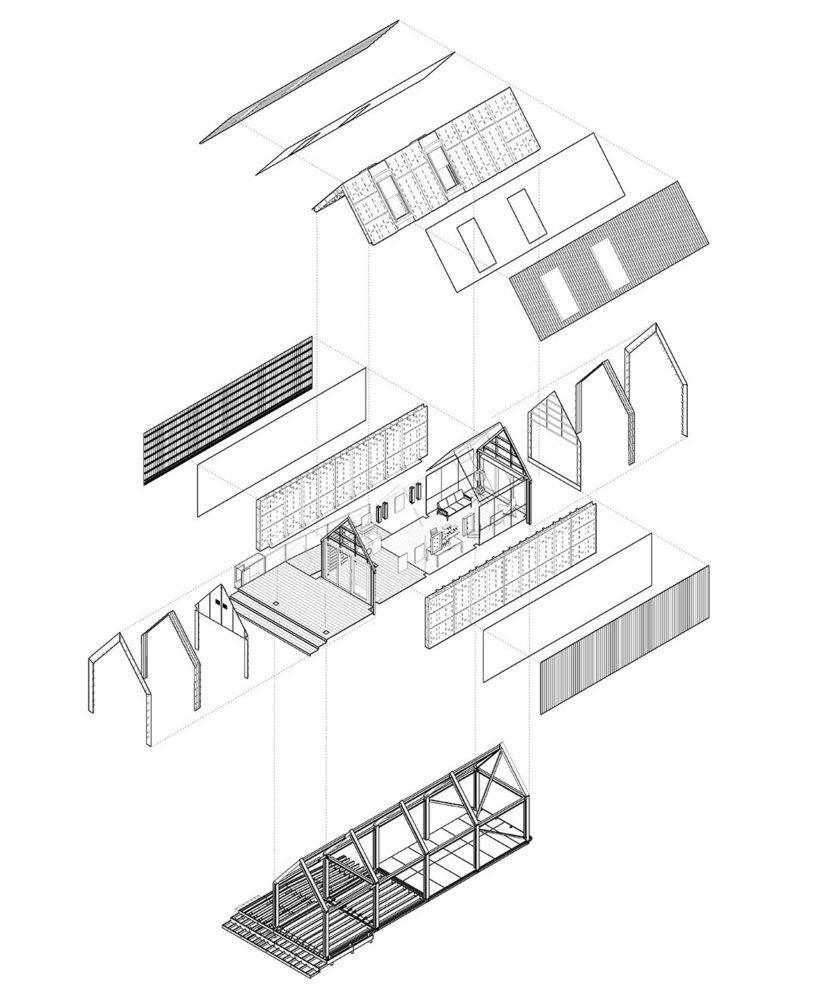Design for Disassembly ( or DfD for short)
It is of the utmost importance to realize that the principles of eco-friendly architecture surpass choosing green building materials, but also include the recyclability of the design, its future impact on the environment, and how it’s going to be of help to future generations.
Now, we are more familiarizing ourselves with the notion of “design for disassembly” and what it means for architects and designers. Simply put, design for disassembly means that as we construct a building, we have to bear in mind how easy it would be to take it apart once again. This means that when the time comes for demolishing that building, it would be fairly simple to take apart its layers and use as little resources as possible to complete the demolition process.
Designing for disassembly is the future of design because it is designing with the intent of reusing the materials over and over, preserving the planet’s resources, and building a future for posterity.
What is design for disassembly?
The Cradle to Cradle Products Innovation Institute (C2CPII) initiated the Built Positive movement with the aim of enhancing the value and quality of the materials and products used in the built environment. This approach will definitely lead to a circular economic system that results in waste-reduction and the continual use of building materials. The Build Positive Movement then revolves around production with a positive impact on society, the economy, and the planet itself. Now that you are familiar with the Built Positive Movement, we are going to focus on one of its six key pillars: Design for Disassemble & Recovery.
The idea behind design for disassembly is preserving the world’s resources and addressing the concerns regarding power consumption. The core of the design for disassembly movement is that the buildings are made specifically for material recovery and value retention. Building designed according to the principle of design for disassembly are enduring buildings that are constructed in a way as if they will never be taken down, but with their material layered in a way that makes it incredibly easy to be taken apart.
Now that we have familiarised ourselves with the ideas and principles behind designing for disassembly, we are going to look at its applications in architecture and how you can integrate it within your own designs.
How to design to disassembly
Plan in reverse. Imagine that your design is going to be taken apart before you even plan on how to put it together. Looking at the materials to see which will be the easiest to remove and make the demolition process as smooth as possible will enable you to choose the best reusable materials there are.
Keep an eye on circularity and retaining material value. Envision the future and see if the materials you’re using are going to retain their value years from now. Make sure that it would all fit into a circular economy system where there is minimal waste and power consumption is optimized during the demolition process.
Document the materials you use and where they are being used in the project. Keeping a detailed record of everything that goes into the building will leave no room for mistakes while disassembling it. This data will help whoever handles this structure in the future take informed decisions and choose the best approaches to deconstructing it.
Lease the building materials; don’t buy them. If one considers that the building materials being used have to go back to their owner, then they’ll be handled with the greatest care. We are leasing these materials from our posterity, and there will come a time when we have to return what we’ve taken. With this mindset, the materials are going to be preserved and waste will be greatly reduced.
Last but not least, accept that second-hand materials aren’t necessarily second-best. You can make a great change in breaking the stigma surrounding recycling building materials, as they’re believed to curb your inspiration and limit your design’s potential, and this is far from true. Reused and recycled materials have personality and flavor. These materials have already served their function in another life, and the fact that they’re being reused does not reduce their quality in any way. Building your project with the intent of taking it apart one day means that you are willing to contribute to the future reuse of materials and adopt reused materials in your own project.
Think green. Don’t forget that all you’re doing contributes to the preservation of nature and securing a liveable future for generations to come. Through designing for disassembling, we are making sure that the materials manufactured are never going to waste and can be reused for countless years to come. Design for disassembly means that we are creating a self-sufficient system in which nothing goes to waste.
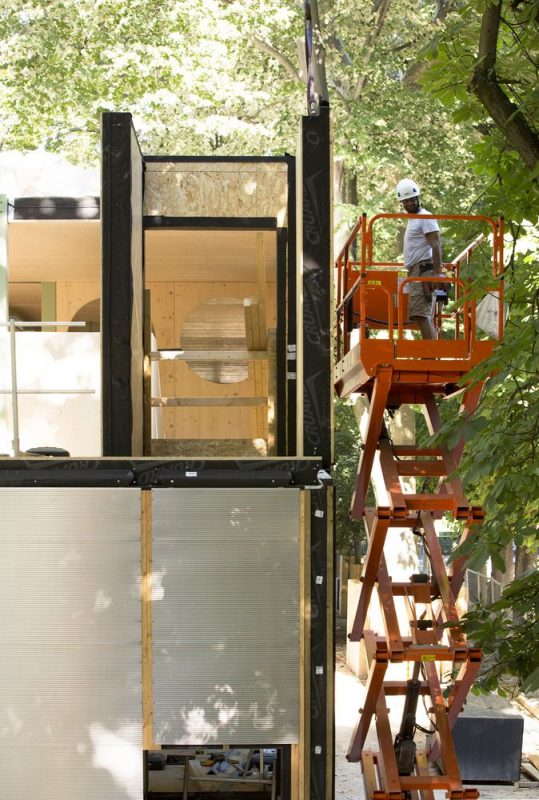
Wooden Nursery by Djuric Tardio Architectes is a nomadic project. Photography by © Clément Guillaume
Design for disassembly in architecture
Many designers and architects adopted the principles of the Build Positive Movement such as William McDonough + Partners and many others. It is wonderful to see design for disassembly in motion, to see it applied to real-life architecture projects which we are going to explore a few of.
NASA Sustainability Base | William McDonough + Partners
In the case of the NASA Sustainability Base, William McDonough + Partners architectural firm designed the building, specifically, for disassembly. They chose a steel structure over a concrete one since this facilitated design for disassembly. This means that the building can be dismantled and repaired in case it was damaged due to earthquakes or other natural phenomena.
The Circular Building | Arup Associates
This prototype designed by Arup Associates for the 2016 London Design Festival revolved around the principles of the circular economy. This low-waste, self-supporting structure was designed using prefabricated construction techniques that facilitate taking it apart. It was not only made to be reused but also made using reused materials. Arup used recycled steel frame elements and heated timber for the cladding.
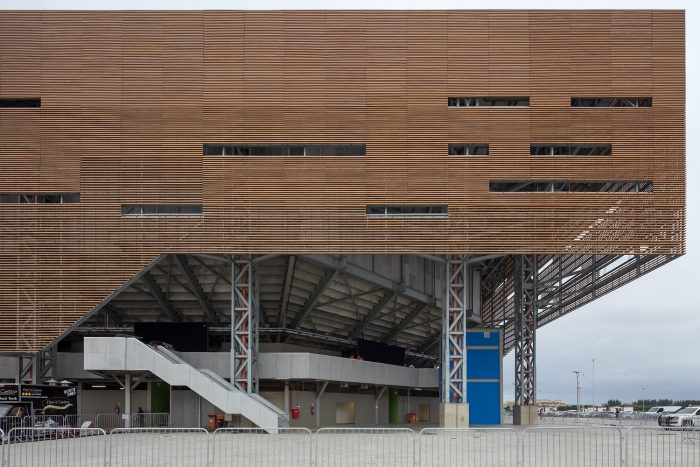
Rio 2016 Olympic Handball Arena by OA | Oficina de Arquitetos, Lopes Santos, Ferreira Gomes Arquitetos was deigned to reuse the modular structures in order to build four schools in the city of Rio de Janeiro. Photography by © Leonardo Finotti
ICEhouse™ | William McDonough + Partners
Embracing the principles set by Cradle to Cradle in their Build Positive Movement, William McDonough + Partners constructed the ICEhouse™ to be used, disassembled, and reconstructed over and over. The ICEhouse™ was used as a discussion hotspot for the World Economic Forum’s annual meeting.
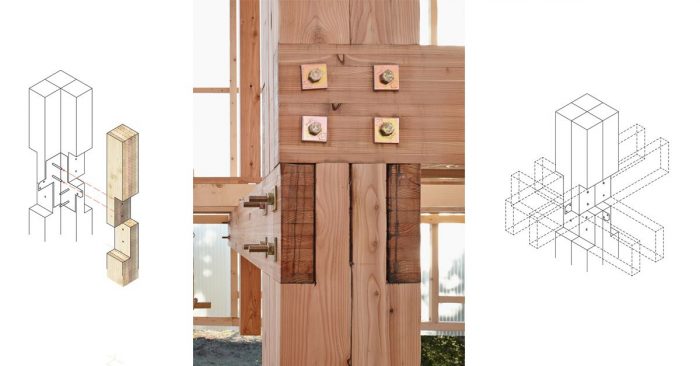
Details of Nest We Grow / Kengo Kuma & Associates + College of Environmental Design UC Berkele. Image © Shinkenchiku Sha
